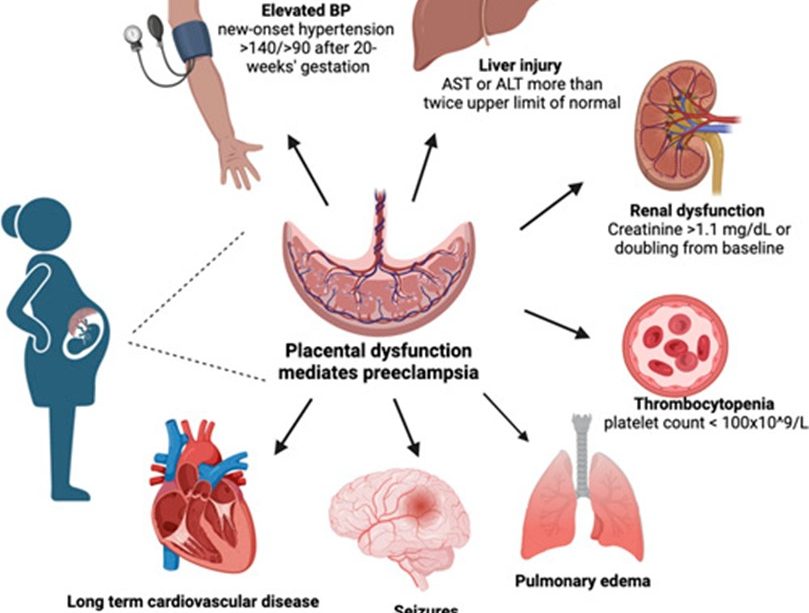Understanding Preeclampsia: Risks, Symptoms, and Management

Introduction
Preeclampsia is a pregnancy-related condition that affects around 5-8% of expecting mothers, characterized by high blood pressure and damage to organs such as the kidneys. It typically develops after the 20th week of pregnancy and can pose serious health risks for both the mother and the baby. As awareness increases, understanding the symptoms, risks, and management options associated with preeclampsia becomes increasingly important for pregnant individuals and their healthcare providers.
Symptoms and Diagnosis
The hallmark symptom of preeclampsia is hypertension, diagnosed if a pregnant woman’s blood pressure is higher than 140/90 mm Hg on two separate occasions at least four hours apart. Additionally, signs such as protein in the urine, severe headaches, visual changes, sharp abdominal pain, and swelling in the hands and feet may signal the onset of the condition. According to the Society for Maternal-Fetal Medicine, early diagnosis through routine prenatal check-ups is critical to managing the risks associated with preeclampsia.
Causes and Risk Factors
The exact cause of preeclampsia remains unclear, but several risk factors have been identified. These include a history of preeclampsia in previous pregnancies, obesity, multiple pregnancies (twins or more), and chronic hypertension or diabetes before pregnancy. Research suggests that issues with the placenta’s development may also play a role, making some women more predisposed to developing the condition.
Management and Treatment
The most effective treatment for preeclampsia is the delivery of the baby, particularly in more severe cases. However, increased monitoring and medications, such as antihypertensives and corticosteroids, may be necessary to manage blood pressure and prevent complications like seizures, which can lead to eclampsia. The timing of delivery will depend on the severity of the preeclampsia and the gestational age of the fetus. Health care providers emphasize the importance of close monitoring and individualized care plans for pregnant patients diagnosed with this condition.
Conclusion
Preeclampsia is a serious condition that requires careful management and monitoring throughout pregnancy. With awareness and early intervention, mothers and healthcare providers can mitigate risks and help ensure healthier outcomes for both the mother and the child. As research continues, it is crucial for expecting mothers to stay informed and maintain regular communication with their healthcare teams about any potential symptoms or concerns during their pregnancies. Increased awareness training for healthcare professionals will also be instrumental in improving diagnosis and managing preeclampsia effectively.









